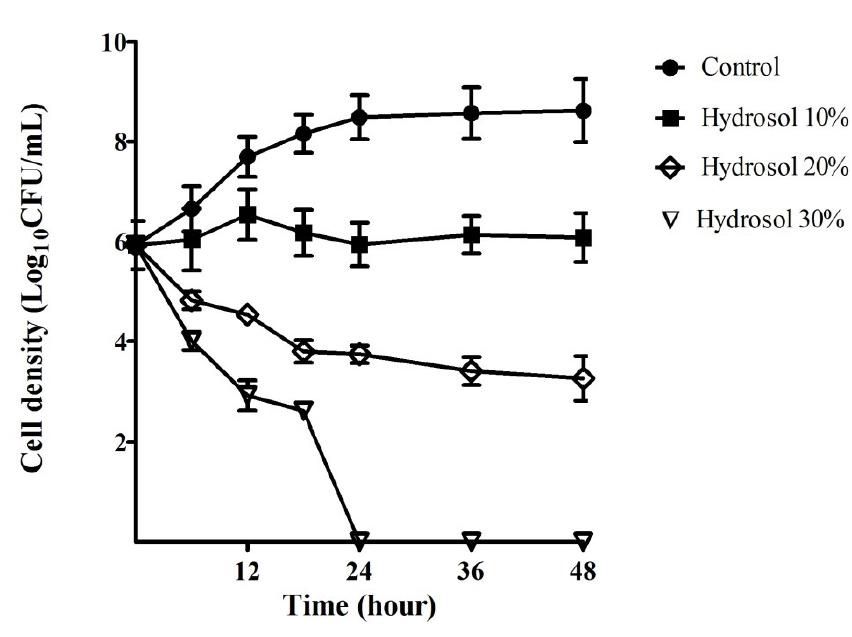In vitro antimicrobial activity of hydrosol from Litsea cubeba (Lour.) Pers. against Helicobacter pylori and Candida albicans
DOI:
https://doi.org/10.15419/bmrat.v7i6.610Keywords:
Antimicrobial activity, Candida albicans, Helicobacter pylori, Hydrosol, Litsea cubeba, steam distillationAbstract
Introduction: Helicobacter pylori and Candida albicans are classified as the most common pathogenic agents in humans. H. pylori is responsible for gastroduodenal diseases and greatly associated with gastric carcinogenesis, while C. albicans is the main cause of fungal urinary tract, genital yeast, and fungal skin infections. The increasing appearance of drug-resistant strains of H. pylori and C. albicans has made the treatment of the infections more serious. Hydrosols from plant steam distillation have been traditionally used in medicine, cosmetics, and culinary uses. They have been recently suggested as antimicrobial agents owing to their safety and ability to reduce the potential of resistance. The aim of the present study is to assess antibacterial and antifungal activities of hydrosols extracted from the fresh fruits of Litsea cubeba against H. pylori and C. albicans. Methods: The L. cubeba fruit hydrosol was obtained by steam distillation method. Evaluation of the growth-inhibiting and microbicidal effects of the hydrosol towards the H. pylori ATCC 43504 and C. albicans ATCC 10231 was determined through MIC (minimal inhibitory concentration), MBC (minimal bactericidal concentration), and MFC (minimal fungicidal concentration) measurements using broth dilution assays. Compositions of the dissolved essential oil (dEO) from the hydrosol were analyzed by GC-MS (gas chromatography-mass spectrometry). Results: The results indicated that the L. cubeba fruit hydrosol exhibited strong antimicrobial ability towards the bacterium H. pylori (MIC of 10%, MBC of 30%) and the yeast C. albicans (MIC of 10%, MFC of 40%). The cells of H. pylori and C. albicans were killed completely after 24 and 18 hours of treatment with 30% and 40% of the hydrosol, respectively. The major constituents of the dEO were geranial (32.92%), neral (27.12%), p-menthan-8-yl acetate (8.45%), 2-cyclopropyl-2-methylspiro[2.2]pentane-1-carboxylic acid (8.09%), linalool (4.24%), and methyl heptenone (4.15%). Conclusion: The results of the study suggest that L. cubeba fruit hydrosols could be used as potent natural antibacterial and antifungal preparations in the global effort to discover safe alternatives to toxic antimicrobial agents.
Downloads
Published
2020-06-25
Issue
Section
Original Research
License
Copyright The Author(s) 2017. This article is published with open access by BioMedPress. This article is distributed under the terms of the Creative Commons Attribution License (CC-BY 4.0) which permits any use, distribution, and reproduction in any medium, provided the original author(s) and the source are credited.
How to Cite
In vitro antimicrobial activity of hydrosol from Litsea cubeba (Lour.) Pers. against Helicobacter pylori and Candida albicans. (2020). Biomedical Research and Therapy, 7(6), 3819-3828. https://doi.org/10.15419/bmrat.v7i6.610
